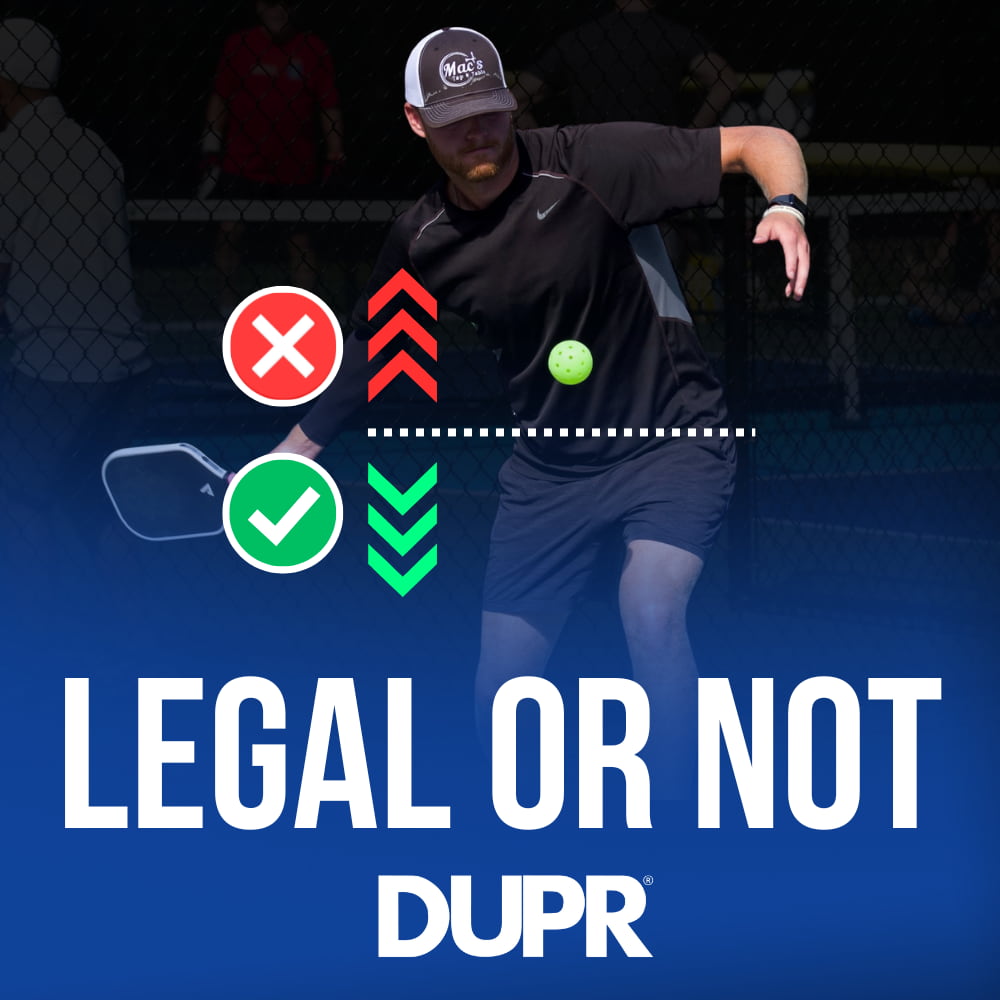How High Can You Make Contact With The Ball Before It Becomes Illegal?

Your Guide to Understanding Legal Contact Height in Pickleball
If you’ve ever watched a match and wondered, “Was that serve legal?” or “How high can you actually hit the ball before it’s a fault?” you’re not alone. The pickleball rules around contact height can be confusing, especially with how much they’ve changed over the years.
The Ball Must Be Hit Below the Waist
The official pickleball rules say the ball has to be contacted below the waist, but what does “waist” actually mean? In pickleball, the waist is defined as the navel line. Any serve where the ball is hit above the navel is an illegal serve.

Paddle Angle and Swing Path Matter Too
There are a few additional rules that determine whether your serve is legal. To stay within the guidelines, your serve must meet all of the following conditions:
- Your paddle must move in an upward, low-to-high motion.
A sideways or downward swing makes the serve illegal. - The paddle head must stay below your wrist at the moment of contact.
If the paddle tip rises above the wrist, especially if it’s pointing upward, you’re at risk of making an illegal serve. - The contact point must be below the waist (below the navel).
Even if everything else is perfect, contacting the ball above the waist automatically makes the serve illegal.
Common Mistakes That Make Contact Illegal
Even experienced players accidentally break the contact-height rule. Here are some of the most common mistakes we see in tournaments:

- Rotating your torso too early: This often pulls the paddle upward and raises the contact point higher than you realize.
- Using a “pop serve”: Players who rely heavily on a wrist flick can accidentally let the paddle head rise above the wrist, making the serve illegal.
- Starting with a high backswing: A high backswing increases the risk of making contact too high on the downswing.
How to Check Yourself in Practice
Here are a few simple ways to make sure your service motion and contact point stay legal:
- Record yourself from the side: This is the most reliable way to see your paddle position, swing path, and contact height.
- Use a waist marker: Put a small piece of tape on your shirt at your belly button or visualize a horizontal line across your midsection.
- Keep the contact point closer to your body: Fully extending your arms can unintentionally raise the height of contact.
- Drop the ball from waist height (not chest height): Starting at the correct height gives you a consistent point of reference every time.
What to Expect in Tournaments
Here are the three main things referees watch for during tournament play:
- Was the contact point below the waist (below the navel)?
- Was the paddle moving in an upward motion?
- Was the paddle head below the wrist at contact?
If a serve is borderline or too close to call, referees will typically issue a verbal warning first before calling a fault and awarding the point to the opponent.
To learn more about what makes a serve illegal, read this article.
How This Impacts Your Strategy
The contact-height rule may influence how you think about your serve, but it doesn’t limit how effective or powerful it can be. Plenty of top players generate strong, consistent serves while staying completely within the rulebook. Here are a few legal ways players add pace and pressure to their serve:
- Using heavy spin to force weaker returns.
- Varying court positions to change angles and disguise intent.
- Targeting different zones like forehand, body, and backhand to keep opponents guessing.
- Controlling depth, using deep serves to push receivers back or shorter serves to challenge players who struggle moving forward.
The highest-DUPR-rated player in the world seeks for deep middle serves. Learn why here.
These rules aren’t designed to limit your serve; they’re meant to protect fairness, clarity, and consistency in the game we all love. Once you understand how contact height works and build these habits into your practice, you’ll step onto the court with confidence, knowing every serve you hit is both legal and tournament-ready.
To learn more about pickleball rules, visit this page.



%20(1).jpg)

%20(1).webp)






